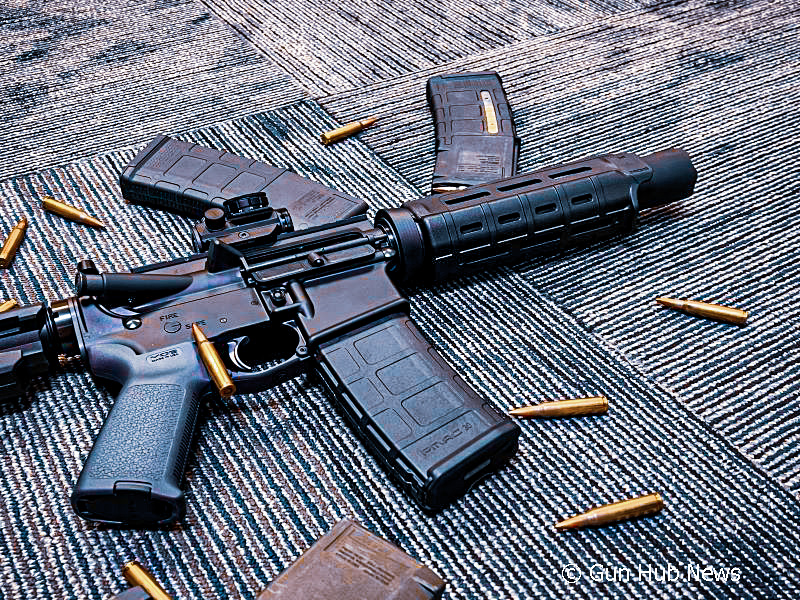The Arm Brace Rule by the Bureau of Alcohol, Tobacco, Firearms, and Explosives (ATF) has been a contentious issue in the firearms community. Since its inception, the rule has undergone several changes and has faced numerous court battles. Let’s explores the history of the ATF Arm Brace Rule, its legal challenges, and its current status in the court system.
The inception of the ATF Arm Brace Rule
The ATF first introduced guidance on stabilizing braces for firearms in 2012. These braces were originally designed to help disabled shooters stabilize large-format pistols, enhancing their ability to shoot safely. Early on, the ATF determined that attaching a stabilizing brace to a pistol did not transform the firearm into a Short-Barreled Rifle (SBR) under the National Firearms Act (NFA). This ruling provided a clear pathway for manufacturers to produce and sell arm braces without falling afoul of federal regulations.
However, the interpretation of the rule has remained dynamic. In subsequent years, the ATF issued several letters clarifying the conditions under which an arm brace might constitute redesigning a firearm into an SBR. For instance, a 2015 open letter stated that using a brace as a shoulder stock would indeed make the firearm an SBR. This stance created uncertainty and concern within the firearms community, as it introduced ambiguity regarding lawful usage.

Manufacturers and users found themselves in a state of flux, with the ATF’s stance shifting between approvals and restrictions. This inconsistency set the stage for legal disputes as stakeholders sought clarity and stability in the application of the rule. The fluctuating guidance also prompted a surge in demand for more definitive regulatory interpretations, setting the stage for future court battles.
Legal Battles Over the ATF Arm Brace Rule
The initial legal challenges to the ATF’s arm brace guidance focused on the vagueness and perceived arbitrariness of the rules. Gun owners and advocacy groups argued that the ATF’s shifting interpretations created a legal minefield. One of the earliest significant cases was the lawsuit filed by the Firearms Policy Coalition (FPC) and other advocacy groups in 2020. They claimed the ATF’s regulations were overly broad and violated the Administrative Procedure Act (APA).
Check out our top AR-15 Mags here!
In Firearms Policy Coalition, Inc. v. Barr, plaintiffs argued that the ATF’s interpretations were inconsistent and lacked a clear basis in law. The court found that the plaintiffs had standing to sue but did not immediately rule on the merits of the case. This initial victory for the plaintiffs underscored the significant legal questions surrounding the ATF’s guidance.
The case of GOA v. Garland further complicated the landscape. In this case, the Gun Owners of America (GOA) challenged the ATF’s new proposed rule that aimed to redefine many pistols with stabilizing braces as SBRs. The lawsuit argued that this redefinition was a significant overreach of the ATF’s regulatory authority. The district court’s decision to grant a preliminary injunction against the enforcement of the rule highlighted the ongoing judicial skepticism about the ATF’s approach.
In addition to these high-profile cases, numerous smaller lawsuits and legal challenges have emerged. These cases often focus on the individual impacts of the ATF’s rule changes, highlighting how they affect gun owners and businesses. The cumulative effect of these legal battles has been to create a patchwork of interpretations and rulings, further complicating the regulatory environment.
Current Status of the Arm Brace Rule in the Court System
As of 2024, the legal status of the ATF’s arm brace rule remains unsettled. Various court rulings have provided temporary relief for some gun owners and manufacturers, but the overarching legal questions persist. The ATF’s latest rule, issued in 2023, attempts to clarify the circumstances under which an arm brace transforms a pistol into an SBR. However, this rule has already faced significant pushback.
In GOA v. Garland, the court’s preliminary injunction against the 2023 rule remains in effect. This injunction prevents the ATF from enforcing the rule while the case proceeds through the courts. The decision is seen as a victory for gun rights advocates, but it is not the final word on the matter. The case continues to wind its way through the judicial system, with both sides preparing for a protracted legal battle.

The broader implications of these court battles are significant. If the courts ultimately side with the plaintiffs, the ATF may be forced to revise or even rescind its current guidance on arm braces. Such an outcome would represent a significant shift in federal firearms regulation and could have far-reaching consequences for the firearms industry and gun owners.
Conversely, if the ATF’s rule is upheld, it could pave the way for more stringent regulation of firearms accessories. This outcome would likely lead to increased scrutiny of other firearm modifications and accessories, potentially expanding the scope of federal firearms regulation. The stakes in these legal battles are high, and the outcomes will shape the future of gun regulation in the United States.
So where are we now?
The ATF Arm Brace Rule has been a lightning rod for controversy since its inception. From its early days as a well-intentioned attempt to assist disabled shooters, the rule has evolved into a complex and contentious regulatory issue. The numerous court battles surrounding the rule highlight the deep divisions over federal firearms regulation and the challenges of balancing public safety with individual rights.
As the legal process continues to unfold, the future of the ATF’s arm brace rule remains uncertain. Both sides of the debate are preparing for a long and contentious fight with significant implications for the firearms community and regulatory landscape. The ongoing litigation will ultimately determine the rule’s fate and, by extension, the broader direction of firearms regulation in the United States.
References
Firearms Policy Coalition, Inc. v. Barr, Case No. 20-cv-00143 (DDC 2020)
GOA v. Garland, Case No. 21-cv-00548 (D.C. Cir. 2021)
Bureau of Alcohol, Tobacco, Firearms and Explosives, “ATF Guidance on Stabilizing Braces,” 2012-2023.
US District Court rulings and opinions are accessible via CourtListener and PACER.
*This article provides a snapshot of the ongoing legal challenges and the uncertain future of the ATF’s arm brace rule, underscoring the complexity and high stakes of this regulatory issue. It should be used for information only and not construed as legal advice.

